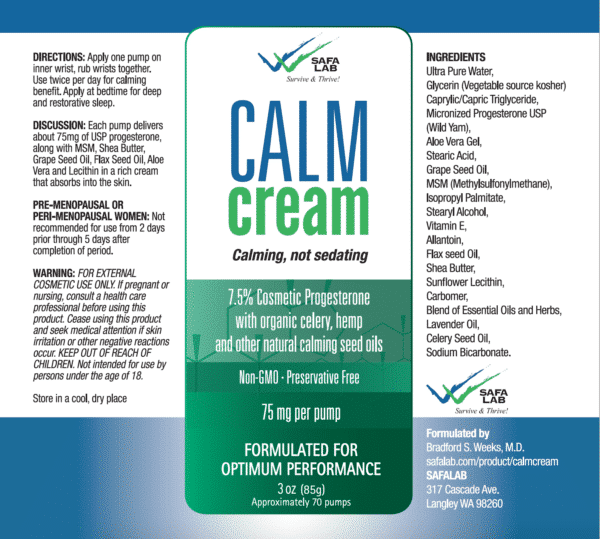This article is an introduction to understanding the role of progesterone in men. Progesterone is often associated with women’s health, particularly in relation to pregnancy and menstrual cycles. However, it also plays a crucial role in men’s health. This hormone is a precursor to testosterone, the primary male sex hormone, and helps maintain hormonal balance in the body. As men age, testosterone levels decline, and estrogen levels rise, leading to a condition known as “estrogen dominance.” This imbalance can result in increased body fat and the development of gynecomastia, commonly referred to as “man boobs.” Progesterone helps counteract the effects of estrogen, making it essential for maintaining masculinity and overall health in men.
Progesterone production in men occurs in the testes and adrenal glands, although at much lower levels than in women. Despite this, normal progesterone levels in men’s serum are similar to those found in women during the follicular phase. Additionally, progesterone is produced in the brain, nerve cells, mast cells, and intracellularly. Progesterone levels can be tested in serum, urine, and saliva in both men and women.
Understanding the role of progesterone in men is vital for addressing hormonal imbalances and maintaining overall health. As men age, maintaining optimal progesterone levels becomes increasingly important to prevent conditions associated with estrogen dominance.
Benefits of Progesterone for Men
Progesterone offers several benefits for men, including support for reproductive health. It plays a role in sperm production and maturation, enhancing male fertility. Beyond reproductive health, progesterone helps regulate mood and emotional well-being, potentially alleviating symptoms of anxiety and mood swings. It also aids in stress reduction and promotes relaxation, which is crucial for maintaining mental health.
Progesterone is important for maintaining blood sugar levels, which is vital for metabolic health and diabetes prevention. It supports prostate health and reduces the risk of prostate-related complications. Additionally, progesterone helps maintain lean muscle mass, contributing to physical strength and endurance. It acts as an aromatase inhibitor, countering cortisol-induced aromatase that leads to excess estrogen production. This helps reduce the risk of conditions associated with high estrogen levels, such as gynecomastia.
Progesterone also supports nerve cell health by maintaining the integrity of the myelin sheath, which protects nerve cells. It may be beneficial for addressing male pattern balding by moderating insulin and glucose levels and balancing excessive dihydrotestosterone. Furthermore, progesterone can help balance the effects of high adrenaline, relieving symptoms such as anxiety, irregular heartbeat, ADHD, hypertension, heart palpitations, and disturbed sleep. It acts as an antihistamine by preventing histamine release from mast cells, which can occur due to estrogen dominance.
Moreover, progesterone has been used in the context of traumatic brain injury and may also be beneficial for chronic conditions. It stimulates new bone growth via osteoblasts in the bone, which is important for preventing osteoporosis. Additionally, progesterone can mediate calmness through the GABA receptor, acting as a GABA receptor agonist.
Symptoms of Low Progesterone in Men

Low progesterone levels in men can lead to a variety of symptoms that impact overall health and well-being. These include low libido, hair loss, weight gain, fatigue, depression, gynecomastia, erectile dysfunction, impotence, bone loss, and muscle loss. These symptoms highlight the importance of maintaining adequate progesterone levels for optimal health.
Recognizing these symptoms is crucial for early intervention. However, since there is limited information on the symptoms of low progesterone in men, this deficiency is often not readily identified by practitioners or understood by those suffering. The remedy is straightforward and biologically sound: topping off the low progesterone with actual progesterone. Masking these symptoms with drugs can never restore health, emphasizing the importance of addressing the root cause of hormonal imbalances.
Dosing and Administration of Progesterone for Men
For men, progesterone replacement therapy may involve a maintenance dose of 10 mg per day to protect against prostate cancer and maintain hormonal balance. Progesterone can be administered topically as a cream, with recommended application sites including areas with good blood supply such as the inner arms, inner forearms, back of knees, upper chest, and neck. In some cases, higher doses of progesterone, such as 200 mg to 400 mg per night, have been used for specific conditions like prostate enlargement. Progesterone may be applied as a cream to the perineum or used as a rectal suppository. Oral capsules of 200 mg can be taken at bedtime to help restore sleep.
Given the lack of awareness about low progesterone symptoms in men, it’s essential to approach treatment with a focus on addressing the underlying hormonal imbalance. Rather than masking symptoms with medications, supplementing with progesterone can provide a biologically sound solution. This approach ensures that health is restored by targeting the root cause of the issue, rather than just alleviating symptoms.
Additional Considerations: Finasteride and Hormonal Balance
Finasteride is a medication commonly used to treat male pattern baldness and benign prostatic hyperplasia (BPH). It works by inhibiting the enzyme 5-alpha-reductase, which converts testosterone into dihydrotestosterone (DHT), a potent form of testosterone that contributes to hair loss and prostate enlargement. However, Finasteride can also affect hormonal balance, potentially leading to side effects such as decreased libido and erectile dysfunction.
It is important to understand that progesterone is also a 5 alpha reductase inhibitor as is the synthetic finasteride. While finasteride reduces DHT levels, progesterone offers and alternative pathway as it is also converted by 5 alpha reductase. Therefore if progesterone is insufficient, that enzyme activity only targets testosterone. 5 alpha reductase of testosterone to dihydrotestosterone increases the potency. Without an appropriate balance if progesterone is deplete, the androgen activity can be excessive.
Conclusion
Progesterone is not just a hormone for women; it plays a vital role in men’s health by supporting reproductive function, mood regulation, stress reduction, and overall well-being. Understanding the benefits and potential symptoms of low progesterone levels can help men take proactive steps towards maintaining their health. Whether through natural methods or supplementation, ensuring adequate progesterone levels is essential for a healthy and balanced life.
Recommended products
Discover more from The Wellness By Design Project
Subscribe to get the latest posts sent to your email.



